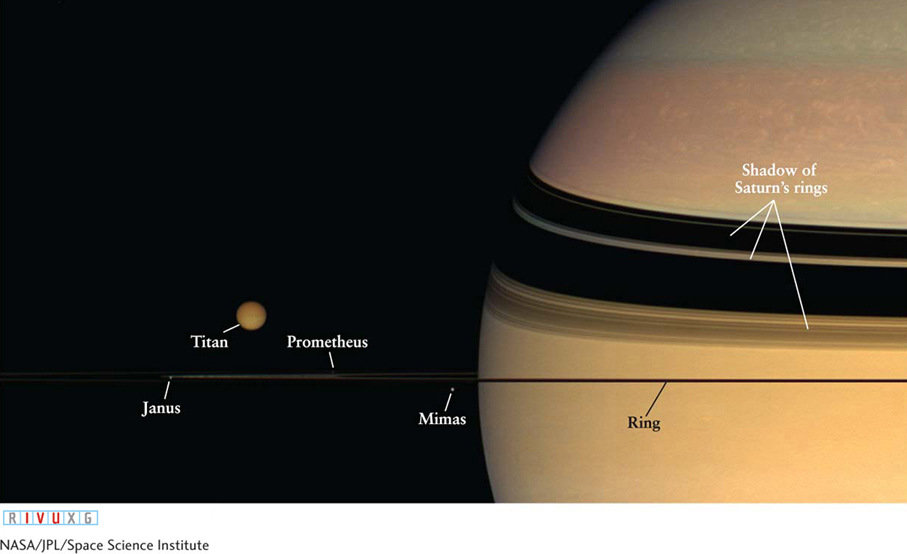Chapter Introduction
191

The Outer Planets and Their Moons
WHAT DO YOU THINK?
 Is Jupiter a “failed star”? Why or why not?
Is Jupiter a “failed star”? Why or why not? What is Jupiter’s Great Red Spot?
What is Jupiter’s Great Red Spot? Does Jupiter have continents and oceans?
Does Jupiter have continents and oceans? Is Saturn the only planet with rings?
Is Saturn the only planet with rings? Are the rings of Saturn solid ribbons?
Are the rings of Saturn solid ribbons?
Answers to these questions appear in the text beside the corresponding numbers in the margins and at the end of the chapter.
192
The four giant worlds lack solid surfaces and are so much larger, rotate so much faster, and have such different chemical compositions from our planet that upon seeing them one knows, to paraphrase Dorothy, “You’re not on Earth anymore.” There is nothing on Earth remotely similar to the swirling red and brown clouds of Jupiter, the ever-
In this chapter you will discover
Jupiter, an active, vibrant, multicolored world more massive than all the other planets combined
Jupiter’s diverse system of moons
Saturn, with its spectacular system of thin, flat rings and numerous moons, including bizarre Enceladus and Titan
Uranus and Neptune, ice giants similar to each other and different from the gas giants, Jupiter and Saturn
193
 Saturn, Four of Its Moons, and Its Rings This Cassini image gives you a feel for how thin the rings of Saturn are.
Saturn, Four of Its Moons, and Its Rings This Cassini image gives you a feel for how thin the rings of Saturn are.